Location
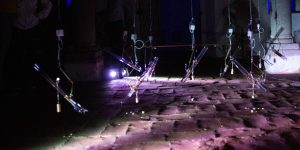
Soundform No.1
Yasuaki Kakehi (JP), Mikhail Mansion (US), Kuan-Ju Wu (US)
Soundform No.1 is a minimalistic soundscape and kinetic art installation that transforms heat energy into a poetically evolving, spatiotemporal composition. Through modulations of heat, light and motion, the artwork creates an ever-changing atmosphere of Zen-like tonal patterns and visual effects.
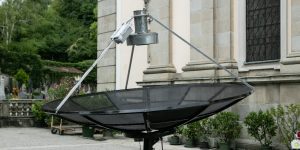
Fantasie#1
Quadrature (DE) in collaboration with Christian Losert (DE)
Via a radio telescope in front of the venue, the noise of the skies is performed by a self-playing organ. Little by little, neural networks take control over the organ and seek out familiar harmonies in the otherworldly noises. Ideas of melodies evolve as the artificial intelligence begins to fantasize about familiar tunes in these alien sounds.
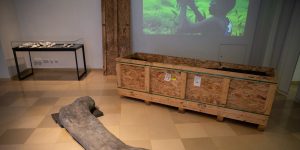
Fossil Futures
Nora Al-Badri (DE), Jan Nikolai Nelles (DE)
"Oskar" is what Germans affectionately call "their" Dino, the world's largest dinosaur skeleton, which is at home in Berlin's Museum of Natural History. Nora Al-Badri and Jan Nikolai Nelles tried to find out where it originally came from and how it finally landed here. They received little information from the public authorities, but with the help of leaked data, artificial intelligence and 3D scans, the history of the fossil could be reconstructed. The trail led to the south of Tanzania. Under German colonial rule, tons of petrified bones were found there and brought to Germany. Using state-of-the-art technology – including a "Virtual Reality Museum" – Fossil Future poses the question of stolen identity, cultural heritage and public property.
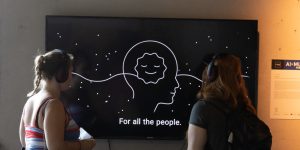
Endel
Oleg Stavitsky (RU)
Endel is a technology that creates personalized sound environments for stress reduction, productivity boosting and adjusting mind and body to different tasks and goals. Sound changes on the fly according to various personal inputs like location, time, heart rate and cadence. Endel's technology is already presented as an ecosystem of products; it’s also designed to be integrated into various hardware and platforms in mobility, hospitality, retail, workspaces, etc.
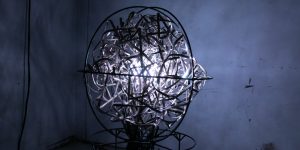
Speculative Artificial Intelligence
Birk Schmithüsen (DE)
The work consists of a series of aesthetic experiments designed to make processes of artificial neural networks perceptible to humans through audiovisual translation. Exp. # 1 examines inner behavior during the prediction and learning process. Exp. # 2 questions an AI’s capacity for empathy and purpose while communicating with a second AI.
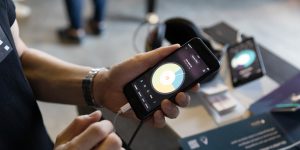
Amadeus Code
Taishi Fukuyama (JP)
Amadeus Code is a songwriting assistant powered by artificial intelligence.
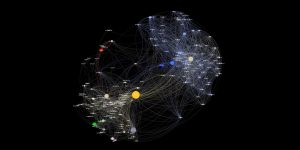
Critical Cartography: Unauthorized Blue Prints
Vladan Joler (RS)
This map is based on a 5-year internet monitoring process and over 400 different cases of violations documented and analyzed by the Share Foundation. Though different methods represented in this map are observed in our local context, we believe that they are also being used worldwide in similar forms. This map is an attempt to interconnect most of those issues into one map, one possible narrative, one possible reading of those processes.
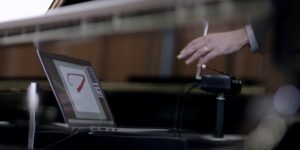
Computers that Learn to Listen
Institute of Computational Perception, Johannes Kepler University (JKU) Linz (AT)
A set of 8 short demo videos on latest results from the world of scientific research: computers learn to listen to and “understand” music; an autonomous drum robot recognizes beat and rhythm; musical computer companions turn music pages for pianists, listen to orchestras, provide synchronized scores to concert audiences, and accompany soloists.
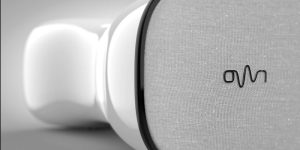
0W1 Audio
Jean Beauve (FR)
Designed by Sacha Lakic, 0W1 D5 Master is the first portable IoT audio system that features truly “life-like” sound. As an IoT, it also embeds a number of music-centric contextual experiences.

Umbilical Digital
Dmitry Morozov / ::vtol:: (RU)
Umbilical Digital is kind of a farm where a special algorithm devotes itself to raising “digital living creatures” such as Tamagotchis. The system monitors their condition and takes on all tasks that are required for maintaining their “life” and keeping their “spirits” up. The simulation of pressing keys makes the system seem like a person who is taking care of the digital creature: it exists as if it has been “raised” by a human hand.


